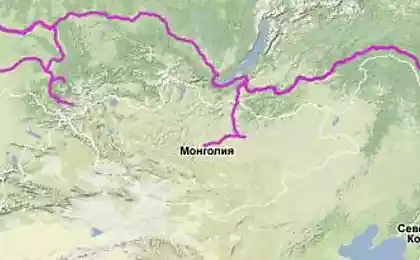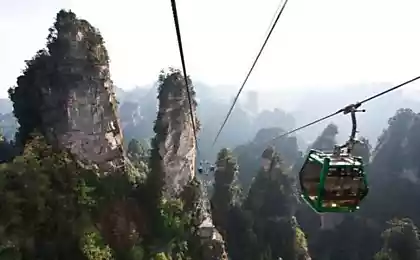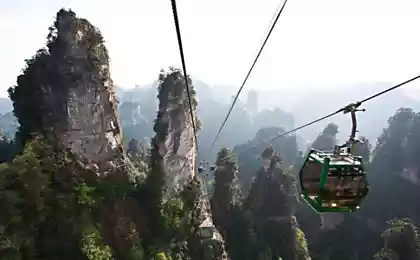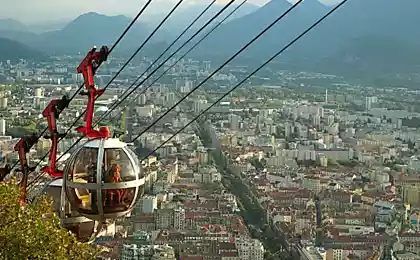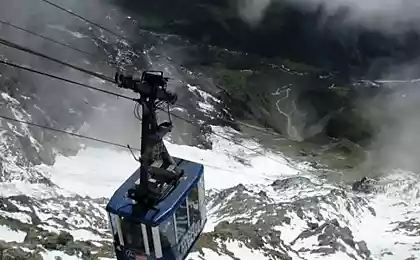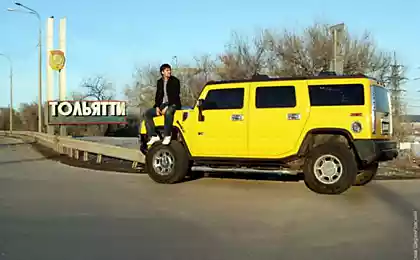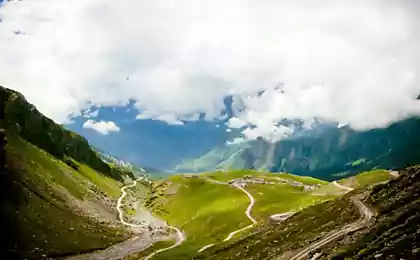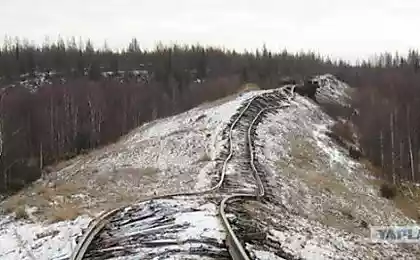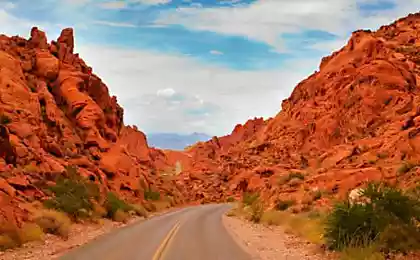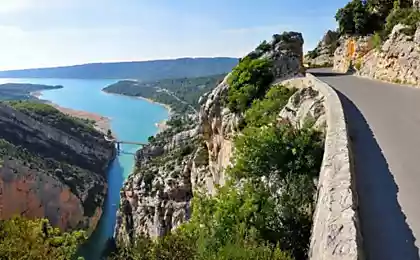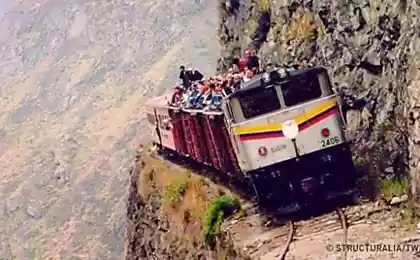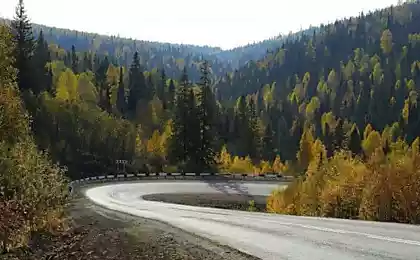906
The road of life
Will be 42 photos and descriptions. Please do not break. The end will tell.
Author:
a-poli.livejournal.com/
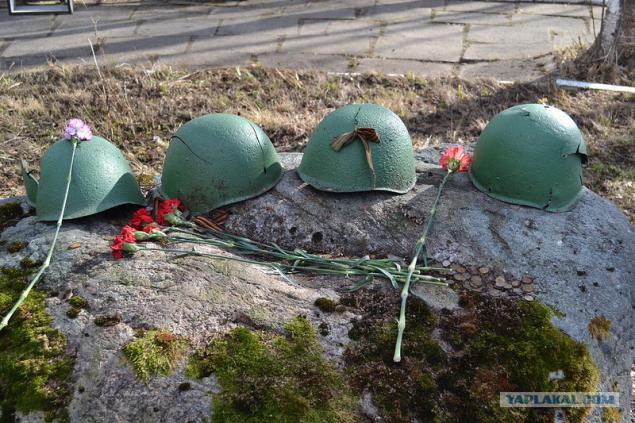
They say that this way during the war called "Road of Death". It is not known how many people died of starvation, were killed, fell through the ice, frozen or gone missing here in 1941-42. The route was bombed and shelled, it swerved snow machines often failed in polynyas (after riding at night). People were traveling in trucks, carts, walked. Eyewitnesses write that were looting. Consuming suitcases malnourished. But it was - and this is important - more: courage, generosity, self-sacrifice, honesty. Total of Leningrad were evacuated to about 1 million 376 thousand. Man. Among them - the very young my grandparents. They called the way - "Road of Life».
Landing on the trams evacuating residents of Leningrad, 18.09.1941

The blockade began September 8, 1941. This day was cut the last road linking Leningrad with the country. The narrow area between the Finnish border and the front line. Highway 45 kilometers long breaks on the shore of Lake Ladoga. Next - on barges in the winter - in the lorry on the ice. Of course, on foot - about 30 kilometers. Income few. Meet - in the besieged city - were carrying food. On Ladoga at that time there were no jetties or piers. But September 12 began the first navigation. November 22, on the ice, "Road of Life" was a first convoy of trucks. The route from 12 September 1941 to March 1943, linked to the country besieged Leningrad.
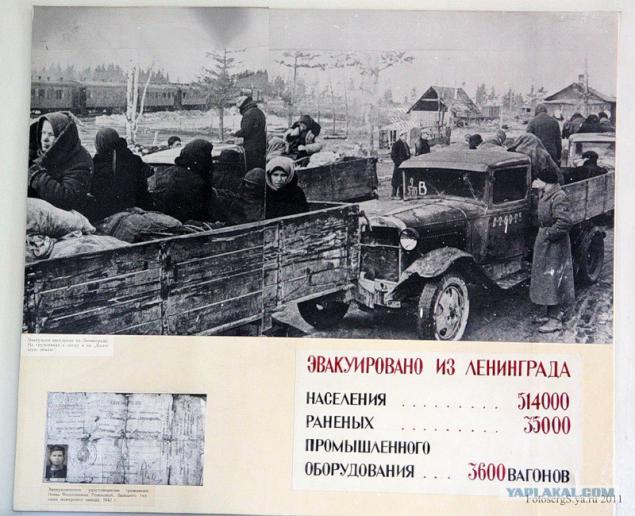
Restore the exact route - from Leningrad to Cape Osinovets - impossible. Firstly, closer to the lake there was a network of forest roads. Secondly, the modern highway A 128 coincides with an old broken country road only approximately. To understand, to feel, as it was difficult ...
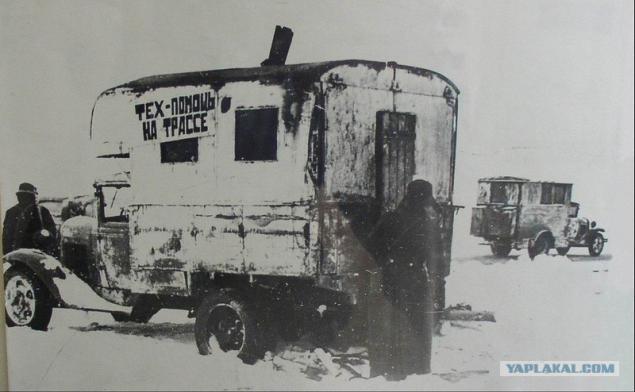
The first seven kilometers of track were in the city, the so-called corridor Rzhevsky. On this track the trucks and special locomotives, streetcars brought people to the station Rzhevka. The first adjustment item was on the corner of Highway and Bolsheokhtinsky Revolution Avenue. Here:
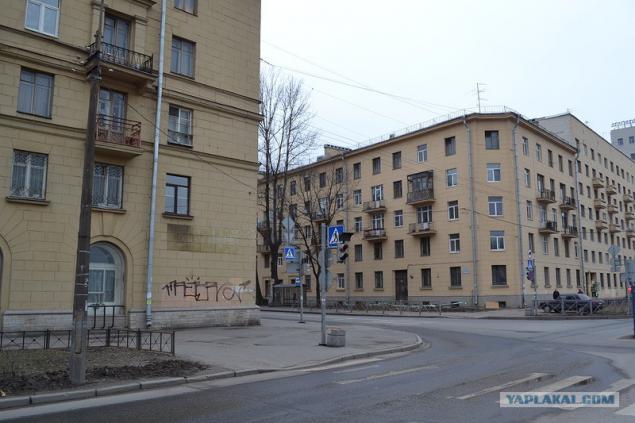
Next - the road went to the east - on the highway Revolution and Ryabovsky highway. The train station Rzhevka. This area is subjected to fierce shelling and bombing. In particular, the 29 March 1942 bomb attacks Rzhevka station building was destroyed. On that day, the station has accumulated a large number of trains with ammunition and fuel, and the bombings of German shells caused the explosions of shells in cars and fuel in tanks. As a result, "a tremendous explosion" station with the surrounding buildings were completely destroyed, killing several hundred people - railwaymen, soldiers, evacuees from Leningrad locals.
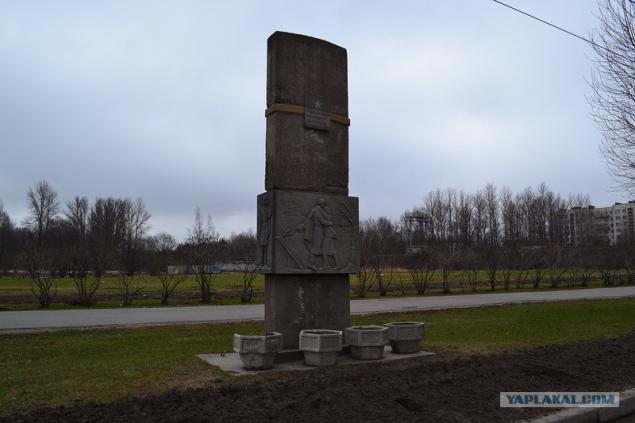
3 kilometer distance. Here, in 1968, it installed, probably the most famous monument of the dead children - "Flower of Life". The composition of the memorial includes: a monument to "Flower of Life" Alley of Friendship, and the funeral mound, "The Diary of Tanya Savicheva", consisting of eight stelae - Besieged diary pages. "Savichevs died. All died. Tanya was left alone ... "Tanya Savicheva died in the evacuation, near Nizhny Novgorod, in July 1944. She survived the journey across Lake Ladoga, but the blockade it would not let ...

...

...
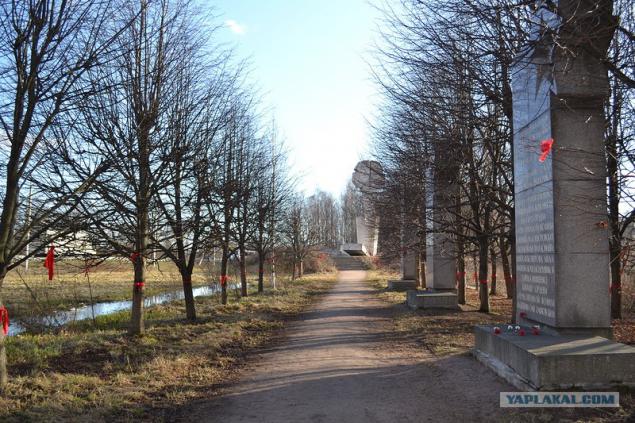
...
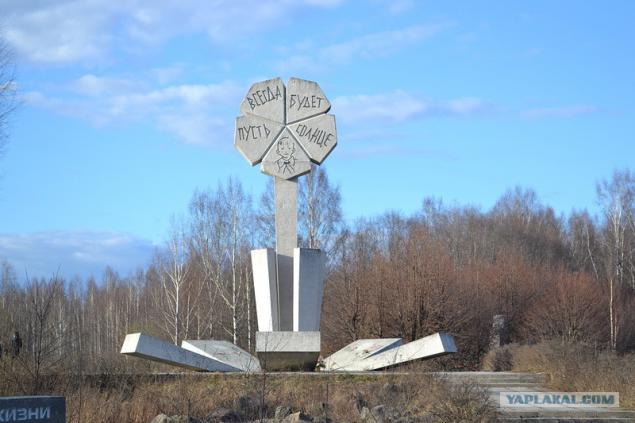
Next - a birch grove. Trees tied a red handkerchief. Earlier, in the spring birch grove near the monument Alel pioneer ties ...
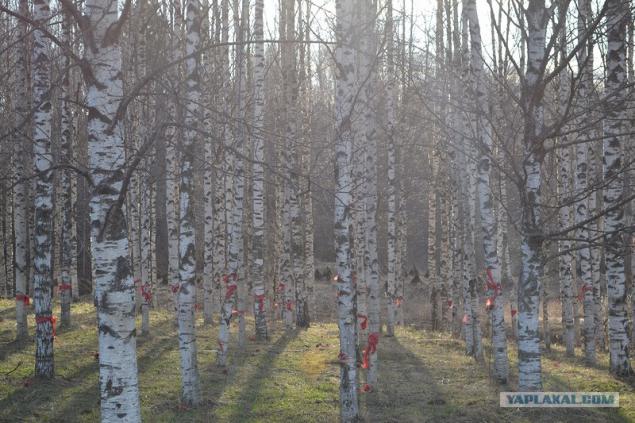
10 kilometer - a sharp rise up - Rumbolovskaya mountain. Upstairs there is a viewing platform, from where on a clear day you can see a panorama of the city. Next - a memorial cemetery.
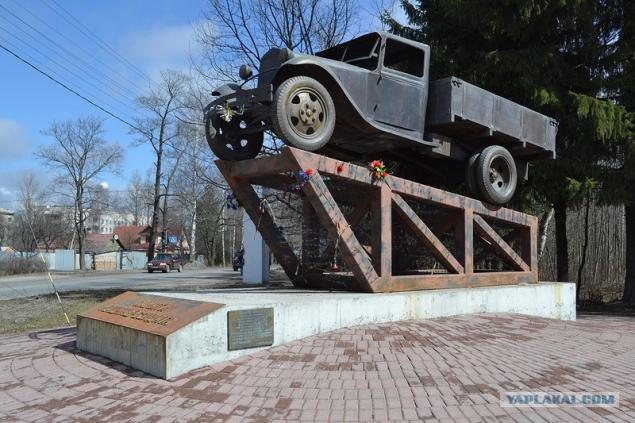
...

...

Near the stela "12 km" can be rolled up in a field. It saved the very land, the present road. More precisely - a restored fragment. Near concrete slabs pointers. Passing a hundred meters along the cobbled, one can imagine the conditions under which military drivers worked.

...
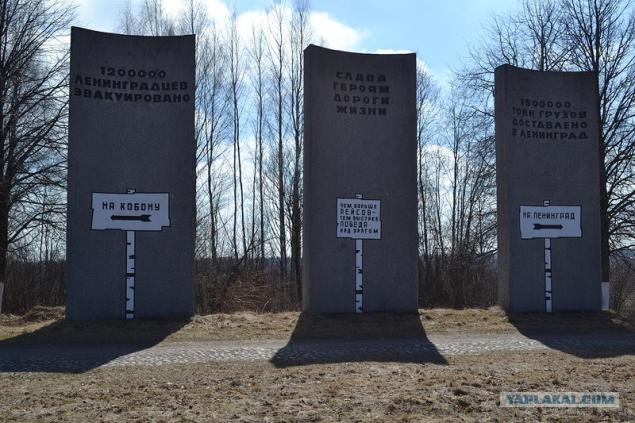
Cobblestone. Perhaps the most ...
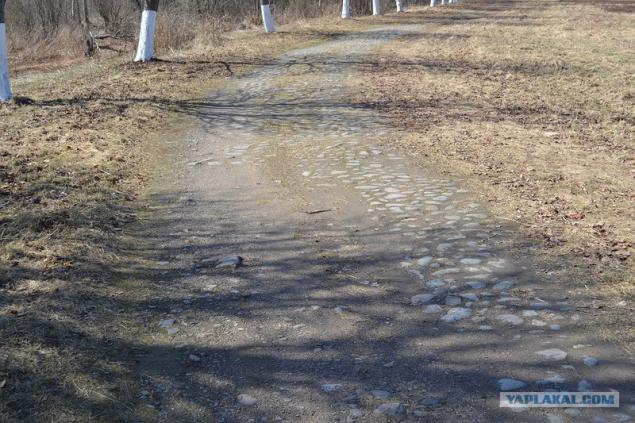
17 kilometers of road life. Outside the village Kornevo memorial anti-aircraft gunner - "Katyusha". On the hill where now stands a monument to the war was an anti-aircraft battery, defending the road of life.
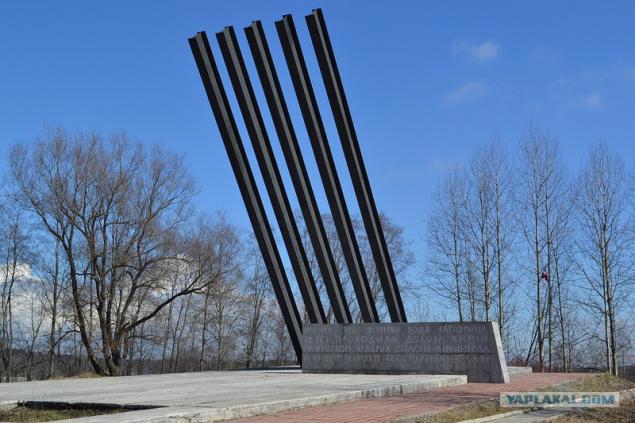
Thirty kilometers. Mass grave. Passing the stelae, involuntarily pay attention to unusual names. A lot of them. Peter has always been an international city ...
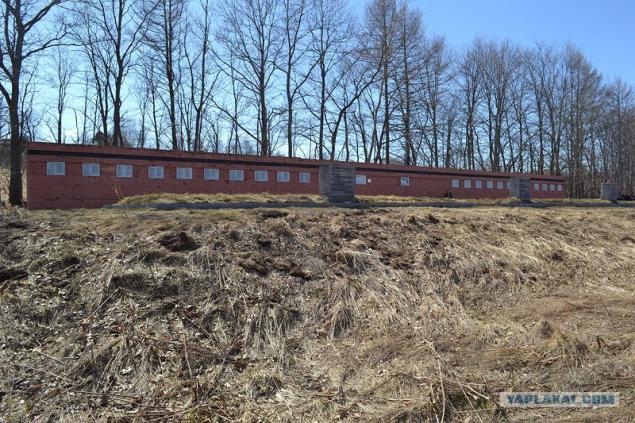
Here, the machine went on the ice of Lake Ladoga. It was laid on the ice track. Along it were located repair shops in each city were controllers, every 5 km were located water intake points. Anti-aircraft artillery and fighter jets defending the sky over highway, road workers blocked the cracks in the ice and
funnel from enemy bombs wooden bridges ...
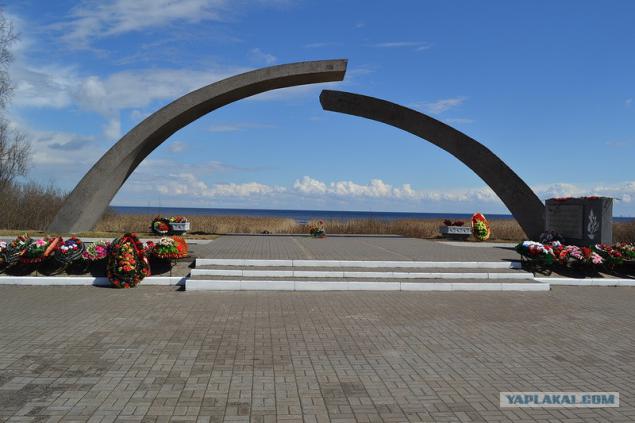
...

...

45 kilometer. Station Lake Ladoga. Here the road joins the railroad tracks. This and other locomotives hauled to the shore of Lake Ladoga evacuated residents of the besieged city, and drove back - food and ammunition.
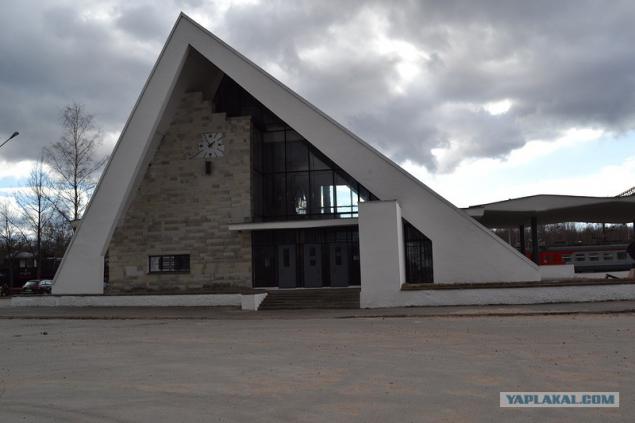
...
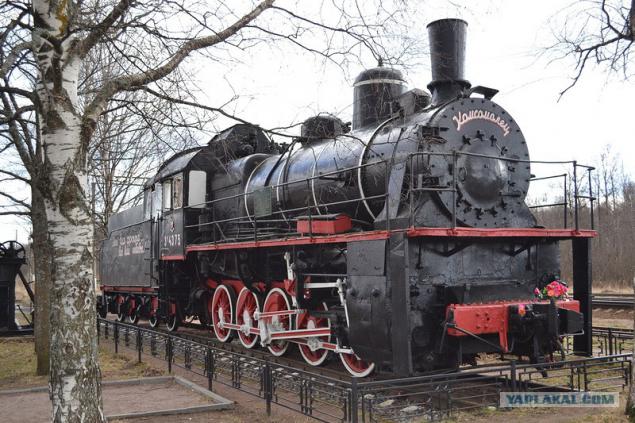
Ladoga Osinovets mound in the village. Mass grave "Ladoga mound." Memorial is an initiative of the Red Rangers Baganovskoy eight-year school. "Military sailors, drivers of cars and other heroes of Ladoga died during the siege of Leningrad in the" Road of Life "in 1941-1943 yy».
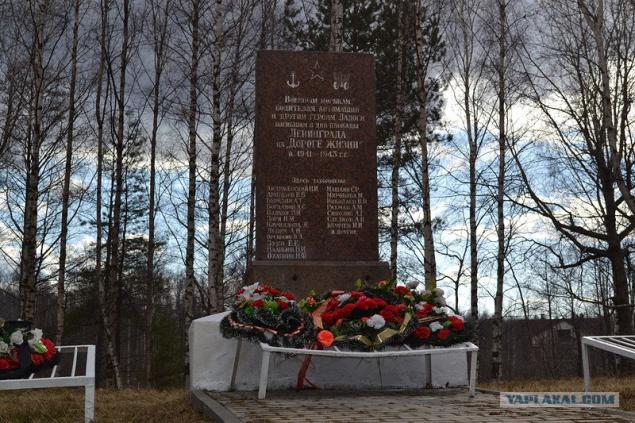
At the beginning of the last century, many vessels did not get to the destination - simply drowned in the treacherous Ladoga. Then maritime authorities of the Russian Empire decided to build in Osinovtse lighthouse. Project made in 1905, but managed to finish the construction of only six years later. They built some of our great people, but with the major part of the lighthouse, a system of mirrors, came incident - in Russia of those years have not done. Therefore, the "apex" ordered from the British. We must pay tribute to the queen's subjects - English masters did not disappoint, and the system work properly to this day.
This is the highest of the eight lighthouses Lake Ladoga - 73 meters. Top of the circle are 366 degrees. From the top of the tower can be seen for 50 kilometers ahead.

Cape Osinovets. At this point on the coast of Lake Ladoga court never molested - is thought to be impossible. But to save the city became possible - and here came a barge loaded with grain. Hence the barge went hiking with people. Swimming was especially dangerous - not only German planes and artillery, raged element itself: only one night from 16 to 17 September at the broken barges storm killed more than 1,000 people.

Cape Osinovets 1941
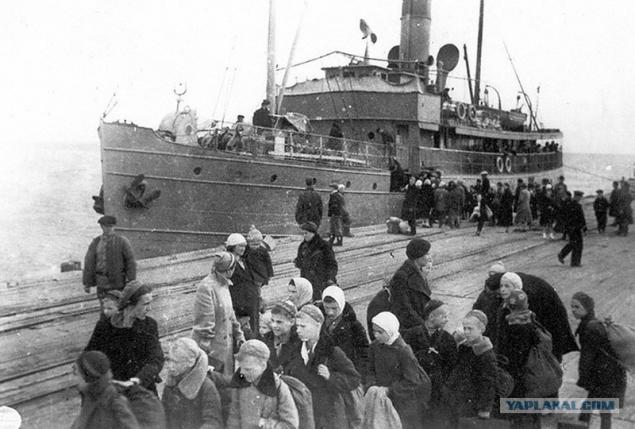
...
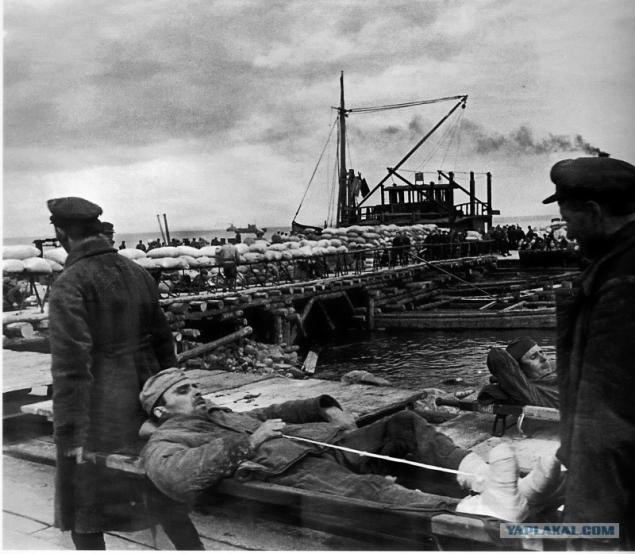
The museum in the village Osinovets. Is dedicated to the heroism of soldiers of the Leningrad Navy Ladoga Flotilla, the heroes of the so-called "Road of Life" - a military communications through the southern part of Lake Ladoga, in which the link with the whole country of Leningrad during the siege of the city. The museum features flags and naval battle flags, weapons and military equipment in those years, models of ships, aircraft, vehicles involved in the transport; documents and photographs. It is in words. In fact, an open-air exhibits crumble. Literally. In particular, almost to the base of the rust has eaten the famous lorry - GAZ - AA. And in the '70s, I saw her unharmed. If restoration is not performed - the same will happen with other exhibits.
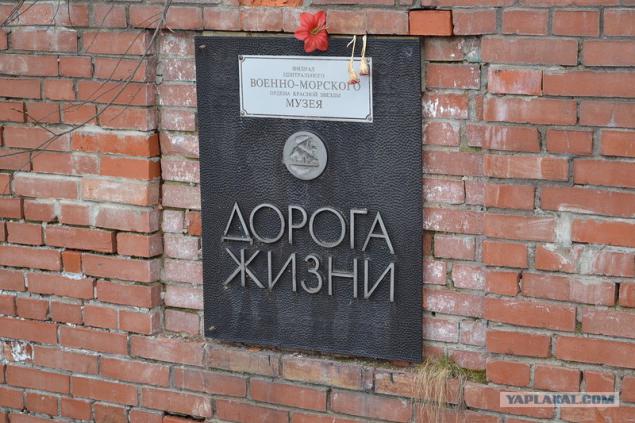
...

Bus kursirovavgy the road of life. Not preserved. The photo was taken in 1988

Howitzer 122 mm caliber sample 1938. She participated in the break of blockade

Tug "Izhorets №8» («Careggi»)
In September 1941, with ammunition and food arrived at the port Osinovets. For the first navigation transported a wide variety of goods. After the war, the ship repaired. Entitled "Koredzh" sailed on the White Lake. In 1976, of the Beloozersk given in Osinovets and put on eternal parking in a museum.
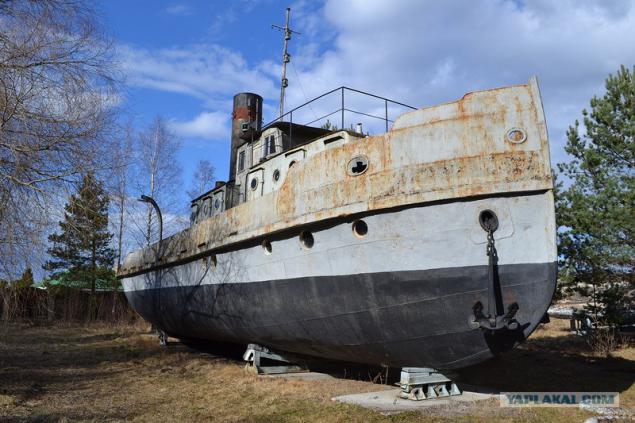
Patrol boats MO-215
Built in Leningrad. August 16, 1941 came into operation. With fights went to the border with Nazi Germany. He took part in combat operations on Lake Ladoga and the Gulf of Finland. It has been about 5 miles tyasyach. He carried out 24 armed campaign. Flood 5 of barges and boats of the enemy. In the fighting had damage.
Wood paneling was not conducive to the safety of the open air. The body rotted and sagged on keel blocks, artillery and deck equipment disassembled (guns mounted at the entrance to the museum).
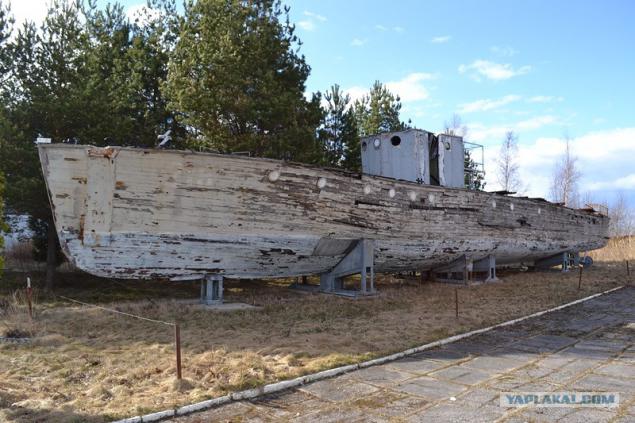
Propelled landing dvuhtryumny tender

Military transport aircraft Li-2
Soviet military transport aircraft, whose production was launched in 1942 in Tashkent based on passenger aircraft PS-84 (1939), was created, in turn, based on the licensed production of the American Douglas DC-3. It is against this were evacuated from Leningrad to my grandparents.

One of the carts, which drove Leningrad
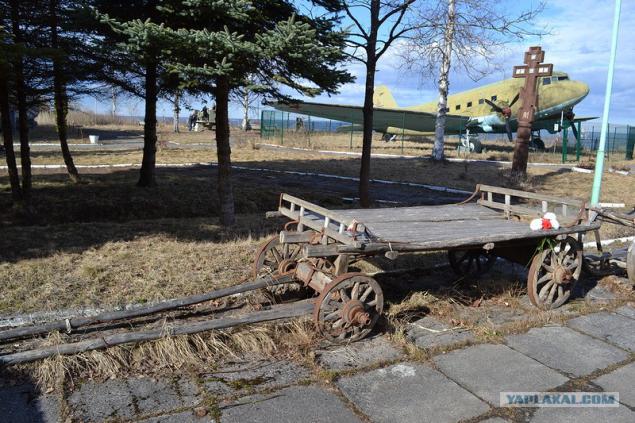
Tower T-34 tank. The true story is unknown. Probably stood on one of the armored Ladoga flotilla.
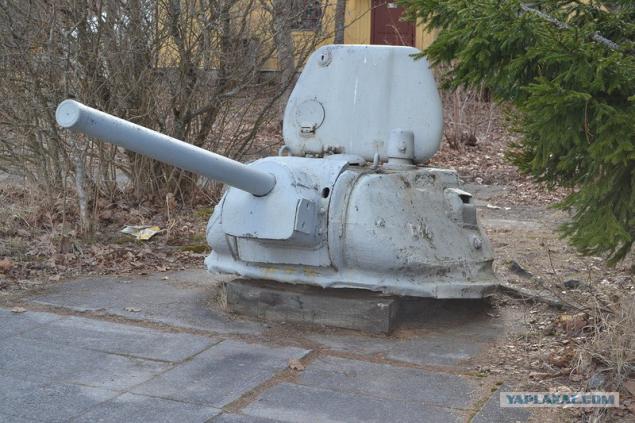
People waited for days of water transport on the coast here in these tents.
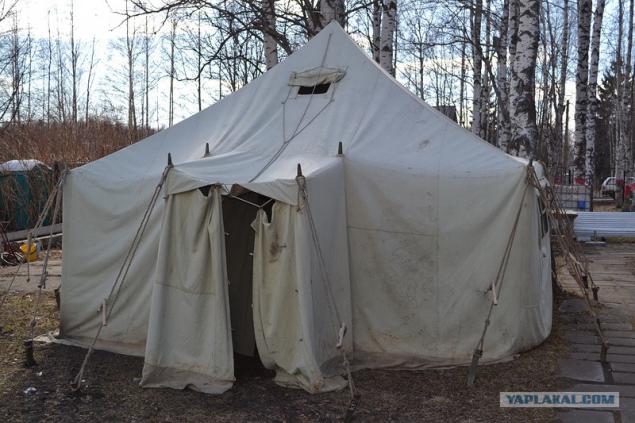
...
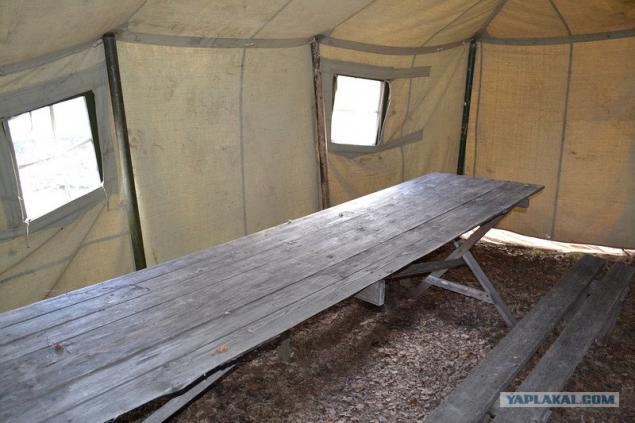
I understand that spoke about the Road of Life is not a lot. There are a lot of monuments and unique rarities, which would be worth writing. There are dozens of published manuscripts - a priceless testimony. As if it did not sound snobbish, but I want to - that no one would have been forgotten, and nothing would be forgotten.
So tnank you. All the holiday of the Great Victory.
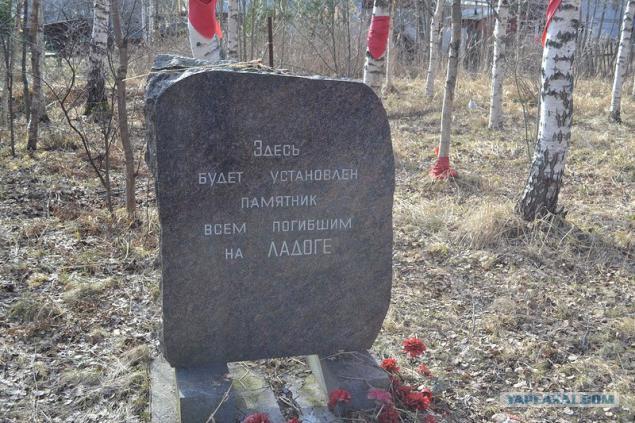
Source:
Author:
a-poli.livejournal.com/

They say that this way during the war called "Road of Death". It is not known how many people died of starvation, were killed, fell through the ice, frozen or gone missing here in 1941-42. The route was bombed and shelled, it swerved snow machines often failed in polynyas (after riding at night). People were traveling in trucks, carts, walked. Eyewitnesses write that were looting. Consuming suitcases malnourished. But it was - and this is important - more: courage, generosity, self-sacrifice, honesty. Total of Leningrad were evacuated to about 1 million 376 thousand. Man. Among them - the very young my grandparents. They called the way - "Road of Life».
Landing on the trams evacuating residents of Leningrad, 18.09.1941

The blockade began September 8, 1941. This day was cut the last road linking Leningrad with the country. The narrow area between the Finnish border and the front line. Highway 45 kilometers long breaks on the shore of Lake Ladoga. Next - on barges in the winter - in the lorry on the ice. Of course, on foot - about 30 kilometers. Income few. Meet - in the besieged city - were carrying food. On Ladoga at that time there were no jetties or piers. But September 12 began the first navigation. November 22, on the ice, "Road of Life" was a first convoy of trucks. The route from 12 September 1941 to March 1943, linked to the country besieged Leningrad.

Restore the exact route - from Leningrad to Cape Osinovets - impossible. Firstly, closer to the lake there was a network of forest roads. Secondly, the modern highway A 128 coincides with an old broken country road only approximately. To understand, to feel, as it was difficult ...

The first seven kilometers of track were in the city, the so-called corridor Rzhevsky. On this track the trucks and special locomotives, streetcars brought people to the station Rzhevka. The first adjustment item was on the corner of Highway and Bolsheokhtinsky Revolution Avenue. Here:

Next - the road went to the east - on the highway Revolution and Ryabovsky highway. The train station Rzhevka. This area is subjected to fierce shelling and bombing. In particular, the 29 March 1942 bomb attacks Rzhevka station building was destroyed. On that day, the station has accumulated a large number of trains with ammunition and fuel, and the bombings of German shells caused the explosions of shells in cars and fuel in tanks. As a result, "a tremendous explosion" station with the surrounding buildings were completely destroyed, killing several hundred people - railwaymen, soldiers, evacuees from Leningrad locals.

3 kilometer distance. Here, in 1968, it installed, probably the most famous monument of the dead children - "Flower of Life". The composition of the memorial includes: a monument to "Flower of Life" Alley of Friendship, and the funeral mound, "The Diary of Tanya Savicheva", consisting of eight stelae - Besieged diary pages. "Savichevs died. All died. Tanya was left alone ... "Tanya Savicheva died in the evacuation, near Nizhny Novgorod, in July 1944. She survived the journey across Lake Ladoga, but the blockade it would not let ...

...

...

...

Next - a birch grove. Trees tied a red handkerchief. Earlier, in the spring birch grove near the monument Alel pioneer ties ...

10 kilometer - a sharp rise up - Rumbolovskaya mountain. Upstairs there is a viewing platform, from where on a clear day you can see a panorama of the city. Next - a memorial cemetery.

...

...

Near the stela "12 km" can be rolled up in a field. It saved the very land, the present road. More precisely - a restored fragment. Near concrete slabs pointers. Passing a hundred meters along the cobbled, one can imagine the conditions under which military drivers worked.

...

Cobblestone. Perhaps the most ...

17 kilometers of road life. Outside the village Kornevo memorial anti-aircraft gunner - "Katyusha". On the hill where now stands a monument to the war was an anti-aircraft battery, defending the road of life.

Thirty kilometers. Mass grave. Passing the stelae, involuntarily pay attention to unusual names. A lot of them. Peter has always been an international city ...

Here, the machine went on the ice of Lake Ladoga. It was laid on the ice track. Along it were located repair shops in each city were controllers, every 5 km were located water intake points. Anti-aircraft artillery and fighter jets defending the sky over highway, road workers blocked the cracks in the ice and
funnel from enemy bombs wooden bridges ...

...

...

45 kilometer. Station Lake Ladoga. Here the road joins the railroad tracks. This and other locomotives hauled to the shore of Lake Ladoga evacuated residents of the besieged city, and drove back - food and ammunition.

...

Ladoga Osinovets mound in the village. Mass grave "Ladoga mound." Memorial is an initiative of the Red Rangers Baganovskoy eight-year school. "Military sailors, drivers of cars and other heroes of Ladoga died during the siege of Leningrad in the" Road of Life "in 1941-1943 yy».

At the beginning of the last century, many vessels did not get to the destination - simply drowned in the treacherous Ladoga. Then maritime authorities of the Russian Empire decided to build in Osinovtse lighthouse. Project made in 1905, but managed to finish the construction of only six years later. They built some of our great people, but with the major part of the lighthouse, a system of mirrors, came incident - in Russia of those years have not done. Therefore, the "apex" ordered from the British. We must pay tribute to the queen's subjects - English masters did not disappoint, and the system work properly to this day.
This is the highest of the eight lighthouses Lake Ladoga - 73 meters. Top of the circle are 366 degrees. From the top of the tower can be seen for 50 kilometers ahead.

Cape Osinovets. At this point on the coast of Lake Ladoga court never molested - is thought to be impossible. But to save the city became possible - and here came a barge loaded with grain. Hence the barge went hiking with people. Swimming was especially dangerous - not only German planes and artillery, raged element itself: only one night from 16 to 17 September at the broken barges storm killed more than 1,000 people.

Cape Osinovets 1941

...

The museum in the village Osinovets. Is dedicated to the heroism of soldiers of the Leningrad Navy Ladoga Flotilla, the heroes of the so-called "Road of Life" - a military communications through the southern part of Lake Ladoga, in which the link with the whole country of Leningrad during the siege of the city. The museum features flags and naval battle flags, weapons and military equipment in those years, models of ships, aircraft, vehicles involved in the transport; documents and photographs. It is in words. In fact, an open-air exhibits crumble. Literally. In particular, almost to the base of the rust has eaten the famous lorry - GAZ - AA. And in the '70s, I saw her unharmed. If restoration is not performed - the same will happen with other exhibits.

...

Bus kursirovavgy the road of life. Not preserved. The photo was taken in 1988

Howitzer 122 mm caliber sample 1938. She participated in the break of blockade

Tug "Izhorets №8» («Careggi»)
In September 1941, with ammunition and food arrived at the port Osinovets. For the first navigation transported a wide variety of goods. After the war, the ship repaired. Entitled "Koredzh" sailed on the White Lake. In 1976, of the Beloozersk given in Osinovets and put on eternal parking in a museum.

Patrol boats MO-215
Built in Leningrad. August 16, 1941 came into operation. With fights went to the border with Nazi Germany. He took part in combat operations on Lake Ladoga and the Gulf of Finland. It has been about 5 miles tyasyach. He carried out 24 armed campaign. Flood 5 of barges and boats of the enemy. In the fighting had damage.
Wood paneling was not conducive to the safety of the open air. The body rotted and sagged on keel blocks, artillery and deck equipment disassembled (guns mounted at the entrance to the museum).

Propelled landing dvuhtryumny tender

Military transport aircraft Li-2
Soviet military transport aircraft, whose production was launched in 1942 in Tashkent based on passenger aircraft PS-84 (1939), was created, in turn, based on the licensed production of the American Douglas DC-3. It is against this were evacuated from Leningrad to my grandparents.

One of the carts, which drove Leningrad

Tower T-34 tank. The true story is unknown. Probably stood on one of the armored Ladoga flotilla.

People waited for days of water transport on the coast here in these tents.

...

I understand that spoke about the Road of Life is not a lot. There are a lot of monuments and unique rarities, which would be worth writing. There are dozens of published manuscripts - a priceless testimony. As if it did not sound snobbish, but I want to - that no one would have been forgotten, and nothing would be forgotten.
So tnank you. All the holiday of the Great Victory.

Source:

